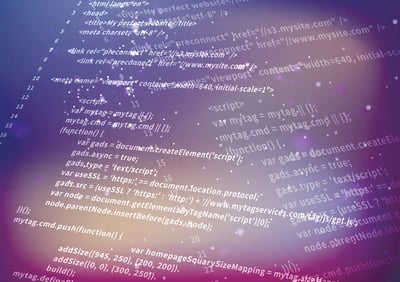
Feeling overwhelmed by the ever-changing HR landscape?
HR professionals are no strangers to challenges like integrating new technology, managing costs, addressing skill gaps, or ensuring data integrity.
But what if understanding these challenges wasn't just about overcoming them but about shaping the future of your workplace?
We tapped into the expertise of leading HR professionals and CHROs to address some of the most prominent HR challenges. And they unveiled the latest trends that can propel your career and organization ahead of the competition.
Let’s dissect each trend and equip you with actionable strategies to confront them head-on.
You might think it's just some fancy add-on for big corporations, but it's actually a lifeline for all businesses today.
Because if you're not keeping up, you're risking a lot more than just being out of the loop. HR tech is now essential for making big decisions, managing talent, and shaping your company culture.
Think about struggling to find the right talent because you’re still stuck in your old traditional hiring practices, having a bunch of disconnected departments, and eventually, maybe missing out on chances to grow.
Bottom line?
In today's fast-paced world, playing catch-up can be a real nightmare.
With that in mind, let’s discuss the top HR tech trends.
The productivity paradox is the challenge to achieve tangible increases in overall employee productivity despite significant investments in HR technology and initiatives.
Despite the widespread adoption of HR software and strategies to improve workforce productivity, you may not always realize the expected productivity gains.
In the HR tech trends virtual roundtable 2024, Anuj Nath, CHRO at Signature Global, suggests a winning formula for resolving it — finding the sweet spot between automation and a people-centered approach.
He emphasizes that HR tech shouldn’t just be integrated. Instead, its first motto should be to help humans because the ultimate goal is to ensure efficiency and provide a qualitative response to stakeholders and everyone involved.
HR technology isn't about replacing humans with machines but creating harmony between the two.
In the same event, Ritika Puri, HR Head at Exam Factor, highlights how HR tech can craft a personalized and more impactful employee journey. She suggests that it all comes down to effectively implementing and leveraging these platforms, from collaboration tools to learning programs.
During the roundtable discussion, Smita Venkataraman, Founder and Chief Advisor of Smita Venkataraman Advisory Services, said that the three pillars of talent management are identification, nurturing, and rewards.
As per Ritika Puri, you can achieve the best results for these by implementing HR tech and leveraging it efficiently. Because if you see it, HR tech excels at spotting potential, guiding growth, and keeping top performers happy.
But there are bumps in the road — connectivity issues, botched implementations, and persistent biases. These challenges can disrupt your processes and impact your plans.
So, how do you overcome these hurdles?
Connectivity issues will make it hard for your HR tech systems to work smoothly. It can happen due to spotty internet, software, or program issues. You’ll need a robust IT infrastructure, regular maintenance, and troubleshooting mechanisms to fix this.
To ensure effective implementation, you must plan and train employees to use the new systems and implement effective change management processes. Plus, you’ll need to regularly evaluate and adapt to ensure that your systems continue to work well.
And there’s always a need to avoid biases in talent management. You can deal with it by carefully designing and testing your systems, working with diverse sets of data, and checking for bias in the system and operations.
According to the fourth virtual roundtable speaker, Debraj Roy, the CHRO at Lux Industries, change management is about adapting the workplace culture to fit the current context.
Now, in the wake of the post-COVID era in 2024, you've got a workforce primarily made up of millennials and Gen Z employees.
And guess what? They want control over their careers and learning trajectories.
So, HR’s role in this scenario should be to be more of a facilitator, to take a step back and let technology take the lead in interactions. For Gen Z, tech is not just a perk; it's a necessity. They want technology to help them navigate career options matching their potential and company performance.
But changing how things work at a company cannot be done with a quick fix — Debraj suggests that it's a gradual process, so start with pilot testing in specific areas. If those tests pass successfully, you scale up, all while keeping a keen eye on continuous training and support.
At the core of change management is finding that sweet spot where workplace culture meets tech advancements and aligns perfectly with organizational goals. The goal of change management is simple — creating a culture of performance excellence where the best talent is not just attracted but retained and nurtured.
It’s 2024. Now, HR technology isn’t merely using a few tools; it’s a catalyst for change within organizations.
Many companies still operate in silos, where they foster competition over collaboration. But Anuj Nath points out a better way forward. He says, "Let's make tech work for us, not against us."
To break down those silos, we need a mindset shift. It's about fostering teamwork, not rivalry. And technology should be the glue that brings teams together.
For instance, using tech platforms to assign tasks to teams, not individuals. Because it's about shared responsibility and supporting each other through thick and thin.
But here's a catch: one size doesn't fit all.
Your organization is unique, right? That's where fluidic thinking comes in. Be flexible. Be adaptable. Design tech that fits like a glove, specifically tailored to your needs.
And when it's time to switch platforms. No constant changes should disrupt your workflow, and everything should flow smoothly. That's the responsibility of HR tech providers — to make transitions seamless.
Now, Smita Venkataraman talks about the bigger picture here. She suggests using data to drive decisions and make sure that you’re not just crunching numbers but that they make sense.
The bottom line is that to thrive in this ever-changing world, you need HR tech on your side, not merely as some software but as your secret weapon for collaboration, flexibility, and informed decision making.
HR tech is changing the ways companies attract and hire the right talent. Because it's not just about filling seats; it's about building a team ready for tomorrow's challenges.
Debraj Roy suggests a groundbreaking model for it, one in which former employees who left on good terms stay connected through a collaborative platform. This way, HR stays in touch with potential boomerang hires, keeping a talent network ready to jump back in.
Anuj Nath also predicts a surge in gig work and freelancing this year. Here, organizations can tap into platforms to find specialists for short-term roles. It's a solution for creating flexible work units, especially in environments where daily wages are the norm.
According to Ritika Puri, using the practical side of HR tech would be beneficial — for instance, using tools for skill assessment, learning, internal mobility, and feedback. Although, you’ll still need the right strategies to provide feedback to your managers or superiors.
HR tech is reshaping talent acquisition, making it more dynamic and inclusive. With these tools, companies can nurture their internal talent, fostering a culture of growth and adaptability.
ChatGPT and other similar tools can transform how you navigate your workplace dynamics.
Imagine how easy it would become to address employees’ needs if they could access tailored information and engage in conversational workflows. You can achieve it with the help of the right tools.
In fact, you can witness a surge in efficiency and productivity with quick content creation, brainstorming sessions, and automated onboarding and recruitment tasks.
According to a publication by the Boston Consulting Group (BCG), generative AI has the potential to increase productivity by 30% in the HR domain.
Source: Boston Consulting Group
Besides that, it can cause a significant slash in employee request approval time and help you with swift decision making.
One of the most significant aspects of generative AI is that if you needed a team of ten to do certain tasks, you could now accomplish that in half the time with half the number of people. This change makes it important for all professionals to invest more in upskilling to stay ahead of the curve.
Mainly, HR tech is here to simplify your life. So, you can avoid spending tons of hours in operational hassles and use them to refine your HR strategies and get more tangible results.
Take applicant tracking systems, for example.
They help you manage job postings, conduct interview scheduling, and overall hiring workflows — they have transformed the entire hiring process. One of its biggest parts is gen AI technology, which allows personalized content for job descriptions and emails to be crafted within minutes. So, they go hand in hand.
Besides that, if you want to accelerate this process even more, you can do so with benefit program costs and offerings. This ensures you remain competitive and cater to the preferences of today’s candidates.
In 2023, there was a notable shift to a hybrid work culture. This led to a lot of technological innovation. As a result, in 2024, you can see a significant advancement in HR tech, and now, you can seamlessly navigate various work models.
Everything has to evolve one day, and so do the developmental methods and processes.
We're living in the digital era, and there’s a notable change in the landscape. You can’t really rely on traditional qualifications or experience anymore. You need new strategies that work in 2024.
The one emerging approach is gamification, which is a game design implemented in non-game situations. You implement this method in your workplace to boost employee participation and engagement.
Many companies work on the principle of peer-to-peer competition. While that can be unhealthy and create negative stress for your people, gamification can help you get better results without really creating tension among your employees.
For instance, employees can earn badges or virtual rewards to achieve certain milestones in the training program. You can also introduce a leaderboard to track progress and foster friendly employee competition.
With gamification, you're not just chasing qualifications; you're honing in on crucial skills. This approach adds a layer of flexibility to talent identification and promotion.
You can recognize talent from diverse sources and foster a culture of continuous learning. So now, you’re not just finding talent; you’re nurturing it. It can help you develop an environment where learning isn't a one-time thing but an ongoing process.
But there’s a catch. While executives might think they offer top-notch learning and development (L&D) programs, their employees might see things differently. There's a gap, and a big one, between perception and reality.
Some of your employees might not want to spend time learning new things despite that being necessary for their career benefit and the company. To address it, you’ll need proactive leadership—where the leader takes charge, plans ahead, and is a forward-thinking person.
So, your leaders and managers will have to step up. That way, you can create a true culture of learning rather than just providing L&D programs. That's the key to closing the gap and taking your team to the next level.
According to Johnny C. Taylor Jr., the president and CEO of the Society for Human Resource Management, it's decision time for leaders. You've got to figure out where and how your teams will work.
You've had four years since the pandemic hit, and by now, you've probably gathered enough data to know what's working best for your workplace—whether it's fully remote, a hybrid setup, or everyone back in the office.
Lots of companies have already sorted this out last year. In fact, there was a 28% drop in the number of people working from home in 2023 alone. So, no doubt, you’d have had a similar experience within your company. Take a good look at how your teams have been operating. What's been successful, and what hasn't?
For instance, during the pandemic, you’d have likely transitioned your employees to remote work, and later, you might have adopted a hybrid work model. Necessarily enough, before that, most of your employees probably would’ve worked from the office.
Your job now is to collect all this data and insights related to it and determine which of these work models works best for you. Then, you define your company's culture based on it.
Remember, the way your teams work isn't just about logistics—it's about how your company achieves success in the long run. And that predominantly depends on your employees. So, take the time to think it through.
Learning and development are essential, and there’s no doubt about it.
Workplaces are shifting subtly, and quiet quitting, a trend that started in 2020 and peaked in 2022, is not fully gone. As per Katie Bailey, the professor of work and employment at Kings College London, quiet quitting is still happening.
In fact, the State of the Global Workplace: 2023 Report confirms that 6 out of 10 employees globally are psychologically disengaged from their workplace.
So, you need to remain proactive. However, as discussed earlier, leaders and employees often see things differently. So, you’ll need to fix this misalignment; one way to address it is using internal mobility strategies.
Strategies to keep everyone in the loop, engaged, and happy at work. And when these strategies align with diversity, equity, inclusion, and belonging (DEIB) principles, it's a win-win for everyone.
However, internal mobility isn't just about climbing the corporate ladder. It's about finding new opportunities and matching them with the right skills and interests within your organization. That way, if your employees ever feel stuck or unsure about their career path, they’ll know they have more options in the organization.
Change is constant.
Everything around you is undergoing a profound transformation. And when this is the case, adaptability is your ticket to success — so you adapt accordingly.
Your number one rule to keep your organization thriving is to be proactive. Make good use of all the strategies discussed for emerging trends like generative AI and the overarching HR technology space.
By staying ahead of the curve, you don’t just set yourself up for success, but you take your organization along with you, thereby magnifying the impact. With the right approach, you can navigate the ever-evolving landscape of technology and business with confidence.
To ensure that things go in the right direction, besides having the right knowledge, you’ll need to be prepared. You must equip yourself with the insights you need to handle whatever comes your way.
Because remember, it's not just about reacting to change; it's about shaping it.
Explore our guide on how to leverage HR tech to create a more human-centric and efficient hiring process for your organization.
Edited by Jigmee Bhutia
Sadaf Tanzeem is the Copywriter at HROne, India’s simplest HR software for the most complex HR operations.
When hiring new employees, are you aware of ALL the skills they have or just a fraction of...
 by Tom Winter
by Tom Winter
Building a skills-based organization means moving toward future-proofing businesses.
 by Claudia Domenici
by Claudia Domenici
You’ve probably heard time and again that hiring employees in tech is tough. But how tough...
 by Tom Winter
by Tom Winter
When hiring new employees, are you aware of ALL the skills they have or just a fraction of...
 by Tom Winter
by Tom Winter
Building a skills-based organization means moving toward future-proofing businesses.
 by Claudia Domenici
by Claudia Domenici


